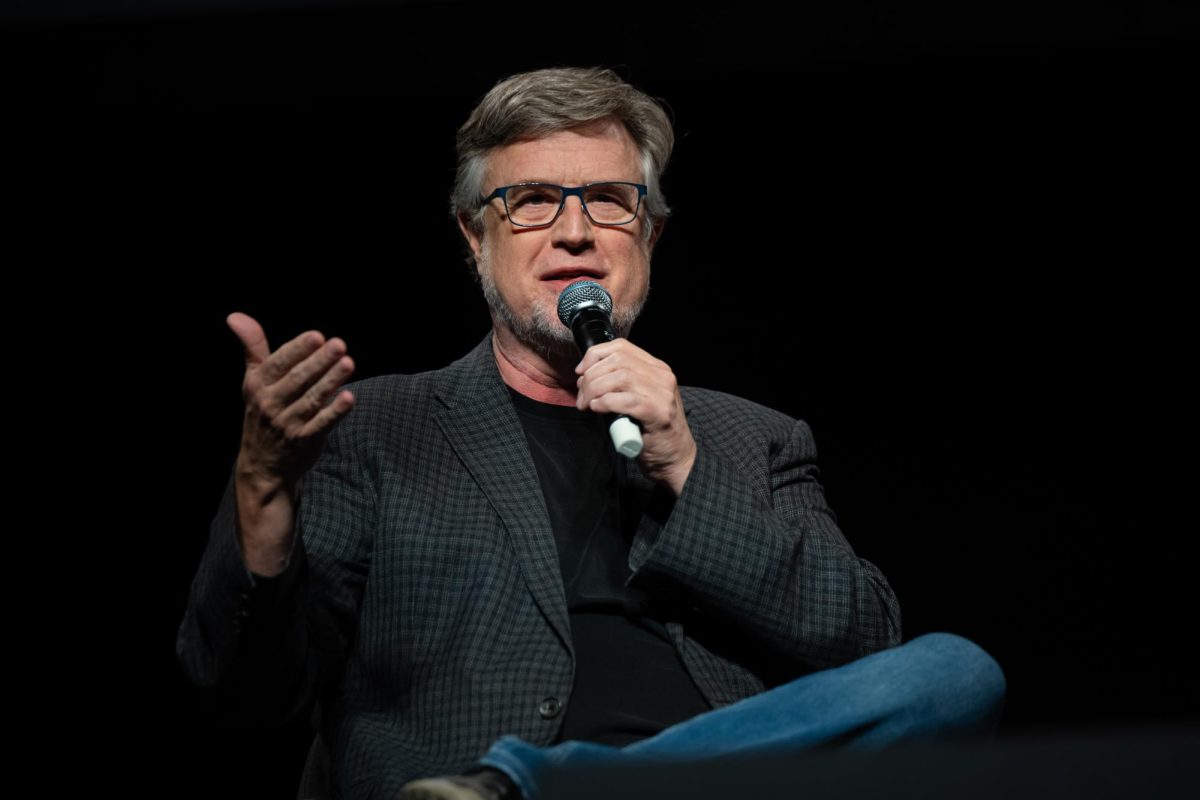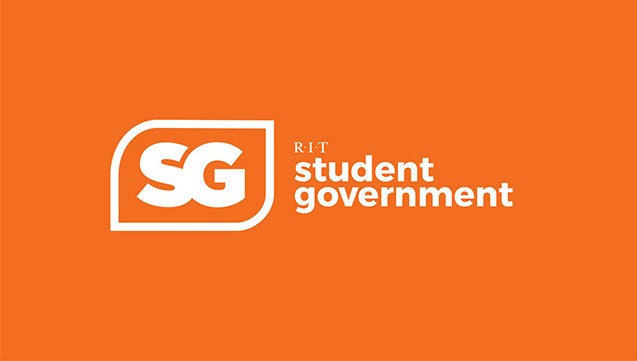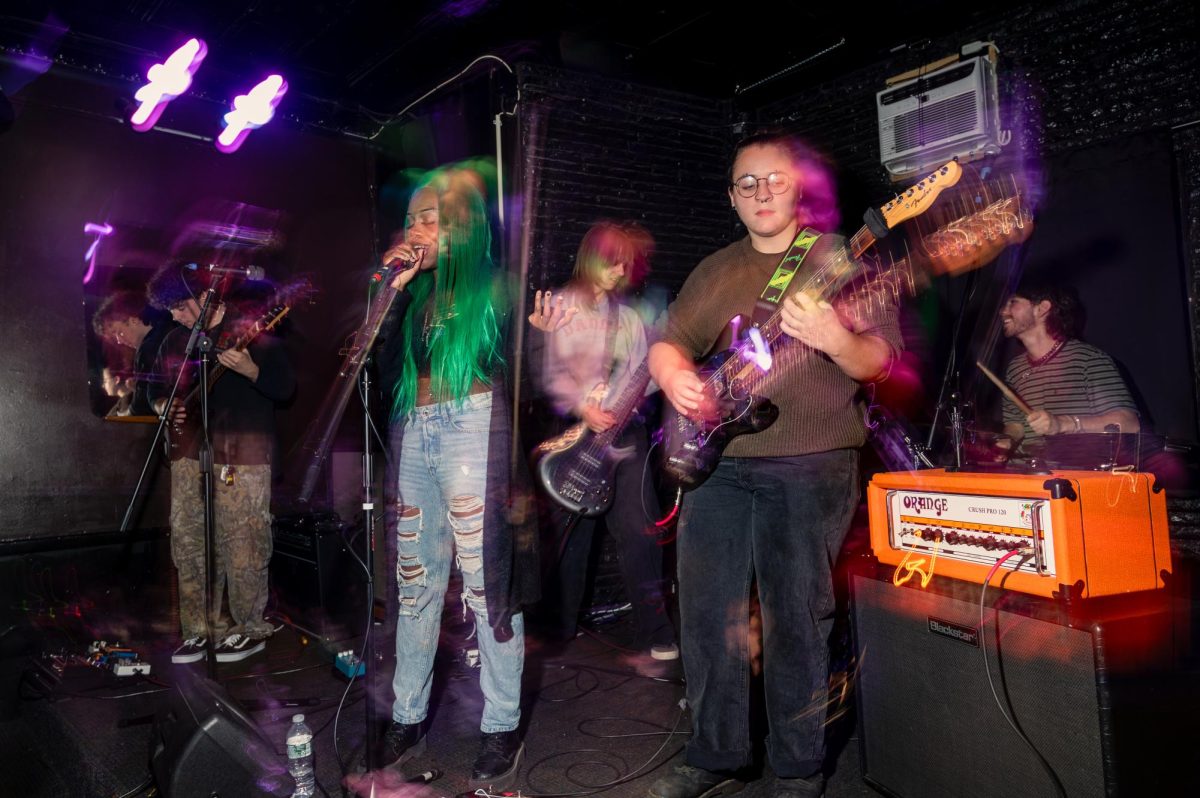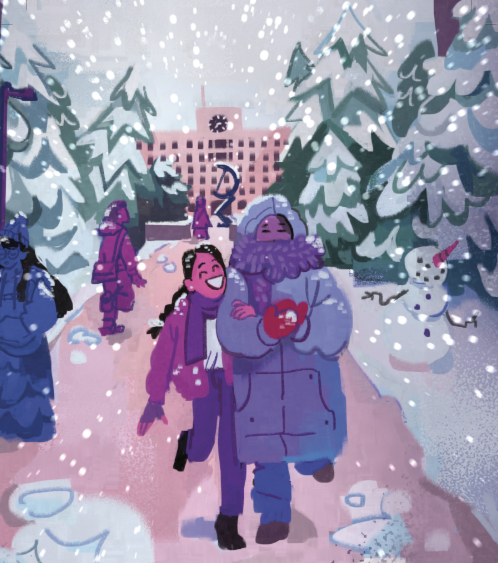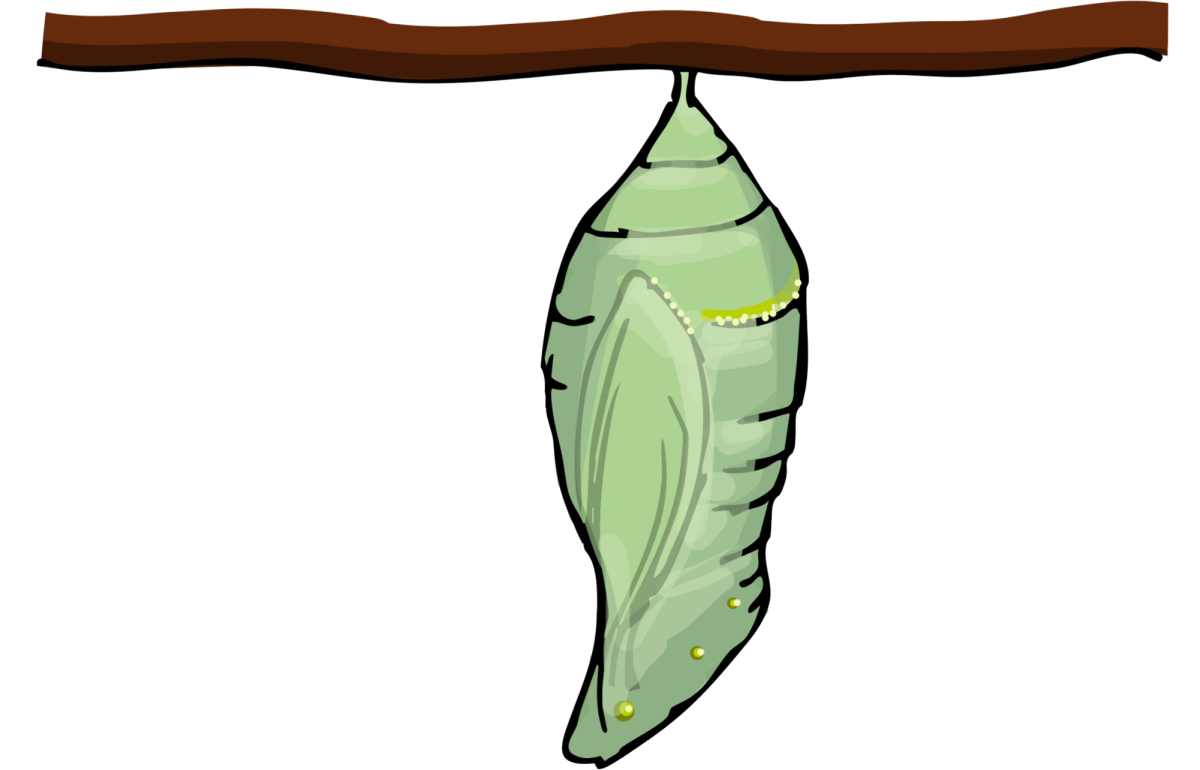This interview was conducted by Reporter on the afternoon of Oct. 18, 2025, prior to a moderated speaker event at RIT with Dan Povenmire, co-creator of “Phineas and Ferb.” Transcription has been loosely edited for clarity and readability purposes.
Q: In regards to the animation industry in the next 10 years, are there any emerging trends or technology that you’re excited about or even concerned about?
A: I’m concerned about AI, because AI can mimic stuff in a way that is definitely stealing stuff from lots and lots of people. I’m on that list that got leaked of Midjourney artists that they’re stealing stuff from. It’s not as bad for me because I make a good living doing this. You know, so I was sort of weirdly a little flattered to be, I’ll be honest, but it’s definitely stealing in a way that is not very policeable, and that’s scary and it makes a lot of things seem easy, but not look really good, you know. It can only do derivatives. That’s what AI can do. It can only look at what’s already been done before and put it in a mash, and have it come out looking sort of like its own thing when it’s really a little bit of this and a little bit of that put together. You won’t get anything really original or new. It’s the same with the AI music, which is occasionally very well — I don’t wanna say crafted but whatever that algorithm is that’s making it is now able to fool most ears. It’s really like, oh, that sounds like a human voice now that wasn’t working two years ago. There’s AI covers of me as Doofenshmirtz singing things that I’ve listened to and go, that really sounds like me and it really sounds like an actual performance. Most of them still suck, you know, like there’s one of Doofenshmirtz singing “Life Is a Highway” that I played for friends of mine. It’s like, oh, when did you do that? I was like, I have never sung. It’s really strange, but also in animation, there’s a lot of in-between stuff that we can already do in AI, but when you just try to put stuff into a prompt to try to get it done, we’ll see what happens with it, but I’m worried. It is something that hopefully there will be regulations for, because right now the technology is outspeeding our ability to police it, and that’s a scary situation. I think you always need somebody to come up with the ideas. When ChatGPT first came out, one of my writers brought it to the writer’s room and said, hey, these friends of mine are working on this thing that is a little scary, and she gave it a prompt and it wrote a really funny news story that was almost like a Saturday Night Live skit. It was only because she gave it the most ridiculous prompt and it wrote something very straight about that and there’s something funny. The prompt she gave was to write me a news story about Kanye West turning into a bidet, as though that was like a real thing that happened. It gave us this very flat description of that happening, and how the news found out about it and all this, sort of stuff and so it was in itself very funny, but she said that when she did that kind of thing with her friends who had been working on it for five or six years, they were like, oh my God, we’ve never had it write anything funny before. It’s like because you don’t know there needs to be a thought process behind it. This is a tool, how could I make it do something funny? I don’t think that it will ever be able to do it. Humor is good, because the best humor comes from being really unexpected and really going to the places that your brain will go to but a machine won’t. It’s a great in-betweening tool. Hopefully this next generation will be instrumental in figuring out how to police it.
Q: What are your thoughts on indie animation? Do you think it’s a good way to get into the industry?
A: I think any way you can get into the industry is a good way to get into the industry. In animation when we’re hiring people for storyboards, we often look and see what they’ve done, what little movies they’ve made. We’re not looking for specifically animators usually, we’re just looking for board artists, but it gives you an idea of their sense of humor, what their sense of motion is, what their sense of emotion is, in a drawing and what their sense of timing is. Anything you can do where you’re making an actual product that you can show to people is a good thing I think. I think that’s how you let people know that you can do it if you’ve been doing it without being told to do it. I got my first writing gig on “Rocco’s Modern Life” by showing them a comic strip I’d done daily at USC for years and I just had a book of it and I just brought it in. I gave it to the supervising director who read the first five pages and laughed at every strip. He was like, all right, you’re hired. It was that quick because you needed somebody who could draw and write and that’s a smaller talent pool. The good thing about technology right now is that you can get your stuff out there and get an audience, you know, and become your own studio. TheOdd1sOut does really well doing very limited animation, but he has just such a good sense of humor and the timing and stuff like that. Or, OverSimplified history has animation stuff going on where people figured out how to do something cheap and quick and still have a real sense of humor and a real personality to it. It’s all about kind of having that wit to you and getting it out there.
Q: What advice would you give to young professionals who are working on maintaining a healthy work-life balance in the industry?
A: It’s hard for me to say that because I tend to work a lot because I like that sort of thing the most. I think you should not let your personal relationships flounder because of work. A lot of times you may want to work more than you think you’re gonna want to work, so I always tried to be home. I had kids the same year that I sold “Phineas and Ferb.” It was busy since I’ve been at work, but I tried to be home… and see the kids as much as I could on the weekends. It was like, I just want to make sure that I’m there for their recitals and their games and any of that kind of stuff, and just be a force in their lives. What I did for that is my second season of “Phineas and Ferb,” I demanded a bunch of things so that I wasn’t there all the time because I was doing ridiculous hours during the first season of the show. When it came to the second season I sort of gave them an ultimatum. If you want me to stay and do another season, we’ll have to raise the budget because I need somebody to be in retake so that I’m not in there all the time. I just went through and said these are the things I need because I don’t want to miss my daughter’s childhood.
Q: For animation students at RIT, what advice would you give them as they prepare to enter into this animation industry?
A: Just, whatever way you can get into the industry, get into the industry. If it’s as a runner, as you know as somebody who goes in and gets the coffee and stuff like that. The guys who were runners on “Family Guy” when I was there are now writers on “Family Guy”. It’s like you want to be in that thing, and then when you get in, learn how to do everything. Ask the producer what other things you can do. You can shadow or just figure out, oh, what are these people doing? How do they do that? Talk to them and ask them questions. Everybody wants to talk about how they do their work most of the time anyway. I think that’s the thing that both me and Swampy, my co-creator on “Phineas and Ferb,” both did when we were on “The Simpsons.” How do we do all of these jobs? I want to be able to do any of these jobs because I think it’ll make me more employable. Then when you become in a position of power where you’re directing or you’re or you’re a show creator, showrunner, then you know how everybody does their jobs and you know where you can push and where you can pull.
Q: Is there anything else that you want to say to the student population at RIT?
A: Find something that you would do for free and then figure out a way to make a living doing it. Swampy had a whole career before animation that was going very well and he ducked out of it because he was making so much money. He thought, oh, if I stay here I’m going to hate what I do. He was a vice president of a marketing firm for computer accessories or something like that, and thought, I need to stop doing this or I’m going to be depending on that. I want to do something that I would like to do, and he got into animation. And he says, the worst day I’ve had in animation is better than the best day I’ve had doing anything else because I love doing it. If you are doing something you love, it doesn’t matter how much you’re making, it will be enough. But if you’re doing something you hate, it doesn’t matter how much you’re making, it will never be enough. So I would say try to do something that you love and then figure out how to make a living out of it.


